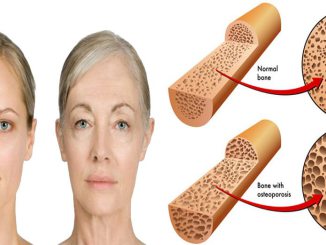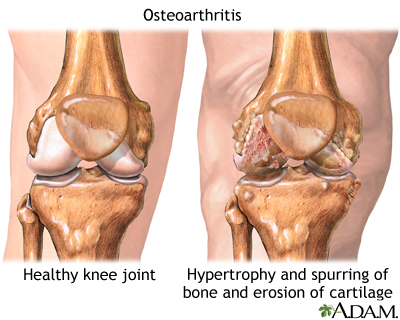Effects of Ageing on Bone
Original Editor Oyemi Sillo
Top Contributors - Lucinda hampton, Esraa Mohamed Abdullzaher, Oyemi Sillo, Andeela Hafeez, Tolulope Adeniji, Kim Jackson, Lauren Lopez, Tony Lowe, Scott Buxton, WikiSysop and Jasrah JavedAgeing[edit | edit source]
Aging refers to the physiological changes that occur in the human body from the attainment of adulthood, and ending in death. These changes involve a decline of biological functions, and are accompanied by psychological, behavioural, and other changes. Some of these changes are quite obvious, while others are subtle.[1]
The Aging Bone[edit | edit source]
Bones undergo a lifelong process of remodeling – mature bone tissue is removed and new bone tissue is formed. Bone remodeling is a highly regulated process that maintains a balance between bone resorption and formation, thus maintaining skeletal integrity.[2]
This balance changes with increasing age, resulting in loss of bone tissue. The ageing bone has reduced mineral content, and is prone to osteoporosis – a condition in which bones are less dense, more fragile, and prone to fractures.[3]
As people age the rate of bone resorption by osteoclast cells (multinucleated cells which contain mitochondria and lysosomes that is responsible for bone resorption) exceeds the rate of bone formation so bone weaken.[4]
And this all happens due to:
- Inactive life style
- Hormonal changes
- Loss of calcium and other minerals in bone[5]
Effects of Changes in Aging Bone[6][edit | edit source]
- Osteoporosis is a common problem among older people, especially post-menopausal women, and is a major cause of hip fractures in the elderly.
- Reduced bone density of the vertebrae, combined with the loss of fluid in intervertebral discs, result in a curved and shortened trunk.
- This reduced bone density, and resulting poor posture, leads to pain, reduced mobility, and other musculoskeletal problems.
- The risk of injury increases because gait changes, instability, and loss of balance may lead to falls.[7]
Ageing Joints[edit | edit source]
Joint motion becomes more restricted and flexibility decreases with age because of changes in tendons and ligaments.
As the cushioning cartilage begins to break down from a lifetime of use, joints become inflamed and arthritic.[8]
Prevention[9][edit | edit source]
Exercise is important for preserving bone density, however care must be taken to avoid high-impact exercises and exercises that present the risk of falling. Useful exercises include:
- Weight-bearing exercises e.g. walking
- Strengthening exercises using free weights, elastic bands
- Balance exercises e.g. tai chi
A healthy diet, including adequate dosage of Vitamin D and Calcium, is also useful for preserving bone mass.
Exercise and Ageing[edit | edit source]
Exercise is wonderful for health — but to get gain without pain, you must do it wisely, using restraint and judgment every step of the way. Here are a few tips:
- Get a medical check-up before you begin a moderate to vigorous exercise program, particularly if you are older than 40, if you have medical problems, or if you have not exercised previously.
- Eat and drink appropriately. Don’t eat for two hours before you exercise, but drink plenty of water before, during, and after exercise, particularly in warm weather.
- Warm up before you exercise and cool down afterward.
- Dress simply, aiming for comfort, convenience, and safety rather than style.
- Use good equipment, especially good shoes.
- Exercise regularly.
- Listen to your body. Learn warning signals of heart disease, including chest pain or pressure, disproportionate shortness of breath, fatigue, or sweating, erratic pulse, lightheadedness, or even indigestion. Do not ignore aches and pains that may signify injury; early treatment can often prevent more serious problems. Do not exercise if you are feverish or ill. Work yourself back into shape gradually after a layoff, particularly after illness or injury.[10]
References[edit | edit source]
- ↑ http://www.britannica.com/EBchecked/topic/1354293/human-aging
- ↑ Hadjidakis DJ, Androulakis II. Bone Remodeling. Ann N Y Acad Sci. 2006 Dec;1092:385-96.
- ↑ http://orthoinfo.aaos.org/topic.cfm?topic=A00191
- ↑ https://www.boundless.com/physiology/textbooks/boundless-anatomy-and-physiology-textbook/appendix-b-development-and-aging-of-the-organ-systems-1417/bone-development-1497/bone-tissue-and-the-effects-of-aging-1500-11222/
- ↑ https://www.betterhealth.vic.gov.au/health/conditionsandtreatments/ageing-muscles-bones-and-joints
- ↑ http://www.nlm.nih.gov/medlineplus/ency/article/004015.htm
- ↑ https://medlineplus.gov/ency/article/004015.htm
- ↑ http://orthoinfo.aaos.org/topic.cfm?topic=A00191
- ↑ http://www.nlm.nih.gov/medlineplus/ency/article/000360.htm
- ↑ http://www.health.harvard.edu/newsweek/Exercise_and_aging_Can_you_walk_away_from_Father_Time.htm








